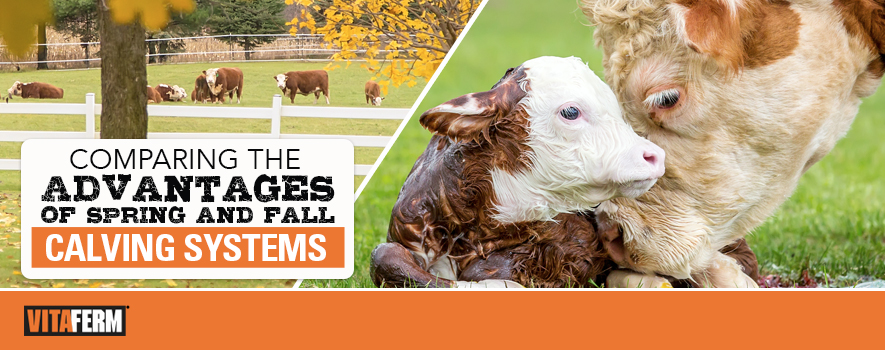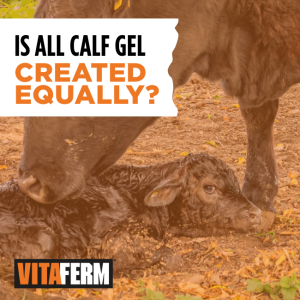
Cattle producers have many choices when it comes to their herd. Perhaps one of the most important decisions they will make when they are starting their operation and getting a foundation cow herd established is if they will calve in the spring, calve in the fall or perhaps they will choose to have two calving groups – one for each season.
“Traditionally, most producers make decisions on setting up calving seasons or calving dates based on feed availability. That is why spring calving is the prominent choice in the U.S. system,” said Dr. Dan Shike, Associate Professor of Animal Science at the University of Illinois. “The peak nutritional requirement is calving through 60-to 90-days post-calving, typically when the best forage availability exists. Some seedstock producers ‘spring calve’ starting in January, but for most it is typically thought of March through May.”
And just as those spring-calving cows reach their peak nutritional requirements when forages are at their peak nutritional levels, Dr. Shike also points out the nutritional requirements are at their lowest at mid-gestation, usually during the winter months when grass isn’t readily available.
Cows that calve in the spring will traditionally have access to the best forages when their nutritional needs are highest, during peak lactation, while getting back into shape for rebreeding. When turned out to grass, they will need limited feed or supplementation other than a high-quality vitamin and mineral program, passing added cost savings on to the producer.
The Indian Mound Ranch, Canadian, Texas, has converted from a dual fall and spring calving program to a spring-calving program in a tight window, and owner Lee Haygood understands the nutritional importance of taking care of those cows.
“We are a 45-day program, meaning we only calve 45 days a year, and if a cow can’t make the grade, she’s gone. We sure don’t want to short them anything, like mineral, that will help them cross the finish line,” he said.
Haygood adds his cows are on grass year-round, although they will get some hay during inclement weather like during the recent snows they have had. They also supplement the herd with five pounds of a 20-percent protein range cube prior to and right after calving until the spring grass comes out of dormancy. However, even in “drier” years like they had last year, with optimal grass in June, his calves’ weaning weights increased on average 25 pounds.
“The list of benefits for fall calving is long, but in many cases the one benefit for spring calving – matching the feed to the requirements – outweighs all the other advantages,” Dr. Shike said.
Dr. Shike adds that the weather does have an impact on two of the major advantages of fall calving.
“Producers can calve out on pasture in September and October when the weather is mild. They don’t have the expense of facilities because they don’t need facilities. And, when you’re breeding those cows in November and December rather than May, June and July, you don’t have to worry about heat stress during breeding and early gestation,” he said.
In addition to the mild weather playing an advantage to the fall-calving herd, calves that are born outside in the open and not confined are often healthier, resulting in fewer cases of sickness, especially scours.
Although the weather does offer an advantage, the availability of feedstuffs to keep those cows in good condition is to the disadvantage of the producer. Sid Arnold, who runs about 40 mama cows at Pleasant Acres Show Cattle near Athens, Ga., explains.
“Our biggest challenge is keeping cows in good body condition; it’s tougher to keep up good fall feed, and the weather can be a mixed bag in Georgia in the fall. It can be wet, or it can be hot,” Arnold said. “Northeast Georgia isn’t known for its primo soil. We have lots of red clay here, but we try to plant winter and fall forages like Rye grass and other no-till forages.”
However, what Arnold lacks in forages with his cow herd during the winter, he makes up for during spring grazing with his growing calves. His primary objective for fall calving is to hit his target market of customers looking for fall-born club-calf prospects, and when those calves are weaned and turned out, their grazing opportunities are the most favorable.
“I sell breeding age bulls and replacement heifers. Calving in the fall, means weaning in the spring. That’s an optimum time for us; they can go onto spring grazing and it is optimal,” Arnold said.
Dr. Shike agrees that increased marketing opportunities for fall-born calves are another advantage to fall-calving, due to the simple philosophy of supply and demand. Since there are so many spring-born calves that sell in the fall, that calf market might not always be as strong as one would hope. With fall-born calves that are sold at weaning, there are fewer calves, so they often bring a premium when the demand is higher, Dr. Shike explained. He said the same is true when it comes time to cull the open cows at preg-check time.
“When you preg check your spring calving cows, you cull them in the fall, and prices are often not as good on spring-calving cows because everyone is selling them. Conversely, with fall-calvers, you preg-check in the spring, the market is better on cull cows. Or if you’ve got an open cow that is thin in the spring, you’ve got grass and you can put a little weight on her before you sell her,” Dr. Shike said.
Haygood has a unique marketing opportunity to sell his open spring calvers. He said any open females he has – usually first-calf heifers – he will breed to calve in the fall and sell them as fall-calvers in his fall production sale, offering his customers opportunities to purchase a pair of high-quality Hereford genetics.
Although market conditions and weather are two advantages to producers who fall calve, the biggest disadvantage is still the lack of forage during the peak nutritional needs for that mama cow. The fall calver is typically rebred between Nov. 20 and Jan. 1, requiring a substantial increase in energy and protein, meaning needing to supplement with stockpiled forages, supplements, a grain mix or a combination of all of these.
“It is essential that you test your forages. It is highly unlikely that there would be a grazing situation or stockpiled forages that would meet their requirements. We are going to need to have the ability to supplement distillers with big bales of hay or mix a TMR and put together a ration with silage, distillers, hay, maybe a little crop residue that would be able to keep those cow-calf pairs going so that cows are in adequate body condition and a positive energy balance to be able to rebreed. The fall-calving herd will have increased feed costs,” Dr. Shike said.
And although most operations have made the decision to exclusively calve in one season or the other or have a split herd to meet the marketing demand of their customers, there are rare circumstances when a herd will want to convert from one calving season to another. Dr. Shike advises that although switching seasons is challenging, he said it can be done at the sacrifice of some pay, due to delayed breeding, calving and ultimately weaning.
“When converting from one season to another, even if you don’t want to have spring and fall calving cows, you might have to have both for a while to cover the lag, especially if you sell calves at weaning, there will be 18 months between checks,” he said. “However, this is another strategy for dealing with open cows if they are a young cow and they don’t have any feet, udder, or disposition problems. If you have a spring calving herd and a cow comes up open in the fall, perhaps add her to your fall calving herd. Maybe that’s a better way to capture value out of her than just shipping her.”
Options. Advantages. Disadvantages. When you’re a cow-calf producer, the choices are endless. Figure out what works best for your operation when it comes to feed resources, labor, inputs and profit potential. Then, do your best, take care of the herd, and the herd will take care of you.


